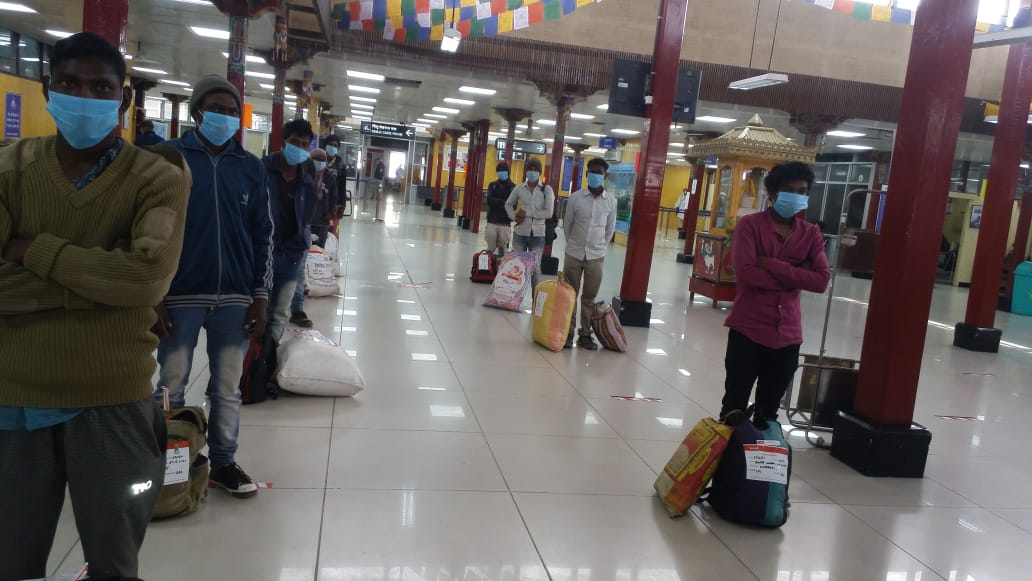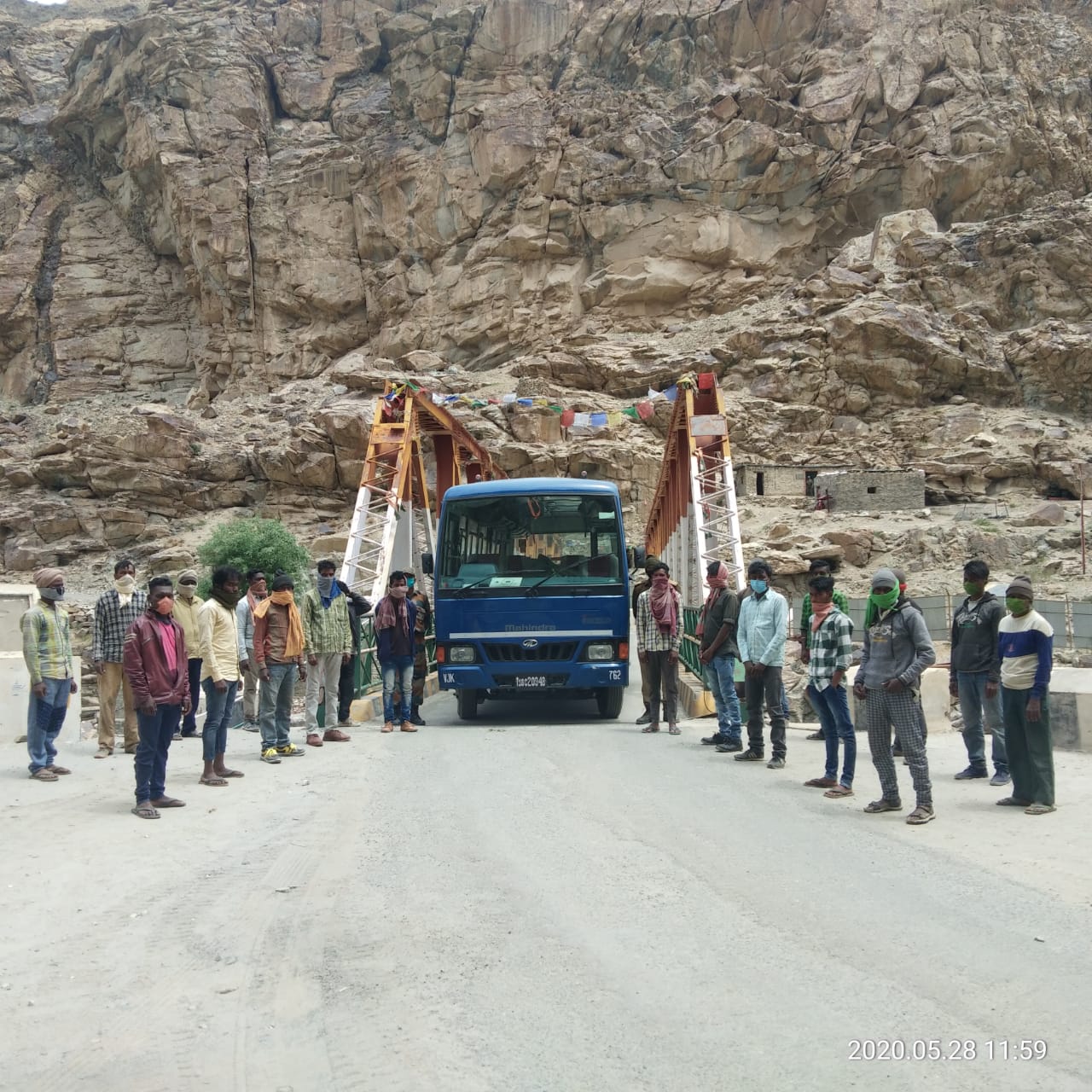Stranded for two months in Leh, 60 migrant workers from Jharkhand, get airlifted
Jharkhand government pays and organises to airlift its workers constructing border roads in Leh; possibly the first such operation for migrant workers within the country during the lockdown

In September 2019, a group of friends of John Paulus Hansda, a 25-year-old resident of Mohaligadpatthar village in Dumka district of Jharkhand was leaving for Leh in the Union Territory of Ladakh. They were going there to construct roads and bridges in the border areas to earn a living for themselves. This migration was their annual affair.
Hansda had already travelled to Kanyakumari, the tip of the country, and always had a strong desire to visit Kashmir [he believes Kashmir and Leh are the same region] — watch snowfall and play with the snow. “I decided to join my friends and travel with them to Leh to work as a migrant labourer,” Hansda, a member of the Santhal tribe told Gaon Connection. He lost his parents when he was a young boy and has the responsibility of looking after his two younger brothers.
Initial few months in Leh were memorable, as these young villagers worked with the Border Roads Organisation (BRO) to construct roads and bridges in the highly-difficult terrain of the union territory. “We were posted at various sites where we used to drill the mountains and carve out roads. Or, build bridges over gorges. Depending on the difficulty of the terrain and the extent of snowfall, the monthly earning ranged from Rs 13,000 to Rs 25,000, which is much higher than what we can earn in our home state,” he said.

But when it was time to return home and prepare the fields for the kharif crop, the nationwide lockdown was announced in March and ever since then Hansda and 59 more workers in his team were stuck at a remote village in Leh with no one to hear them or rescue them.
It was on May 9 that Jharkhand Janadhikar Mahasabha, a coalition of people’s organisations in the state, tweeted to the state chief minister Hemant Soren bringing to his notice how workers from the state were stranded in a remote village in Batalik-Kargil sector of Leh and wanted to return home.
Three days later, on May 12, chief secretary of Jharkhand wrote a letter to the Union Home Secretary informing him how people were stranded and the state government wanted to airlift them at its own expense. The letter sought permission to run a special chartered flight to bring people home.
A couple of days later, on May 20, the state chief minister Hemant Soren again wrote to the Union Home Minister informing him about the stranded workers and seeking permission to run chartered flights to bring them back from Leh and other Northeastern states.
However, there was no reply to this request.
Meanwhile, the state government formed a special team to coordinate bringing the state’s people back home. By May 25, air operations were resumed in the country. In the next two days, the state special team coordinated with the BRO and other local agencies in Leh to airlift 60 workers. On May 28, these workers were checked medically, thermally screened and brought from the remote village to Leh by the BRO in a six hours long road journey.
On May 29 noon, they boarded the aircraft — the first time ever in their lives — and reached New Delhi from Leh. After a brief halt at the Delhi airport, where they were served lunch, the next leg of their journey is set to take them to Ranchi, Jharkhand.

Gaon Connection spoke with Hansda just before he boarded the Ranchi flight from Delhi. “I have ancestral farmland on which I practice farming so that my family has enough food for the next one year. I have an attachment to my land and I need to go back home,” he said.
On being asked if he would ever return to Leh to work as a migrant labourer, he said: “After I land in Ranchi, I want to talk to the chief minister and request him to find us work within our state. We do not want to go out to work.”
Although it was the first time Hansda and teammates had boarded an aircraft, he said he was not scared. “But, when we were air bound between Leh and Delhi, the aircraft was bumping in the air, like a bus jumps on the road. That was a little scary,” he added laughingly.
As you read this piece, 60 workers from Jharkand have landed in Ranchi — a unique homecoming in distressful time. At Ranchi airport, Special Samman Rath buses are waiting to take them to Dumka, another 300 kilometres away. Chief Minister Hemant Soren is inside the airport to receive these workers.

